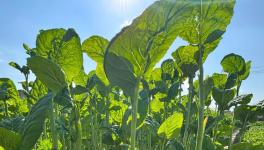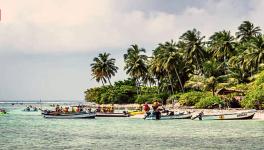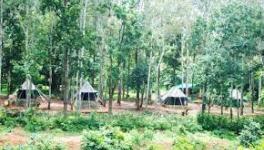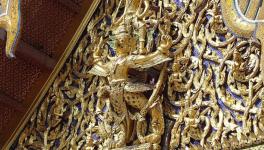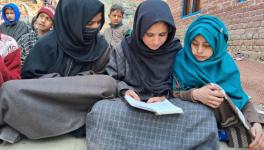In Pictures: The Radiance of Autumn in Ladakh
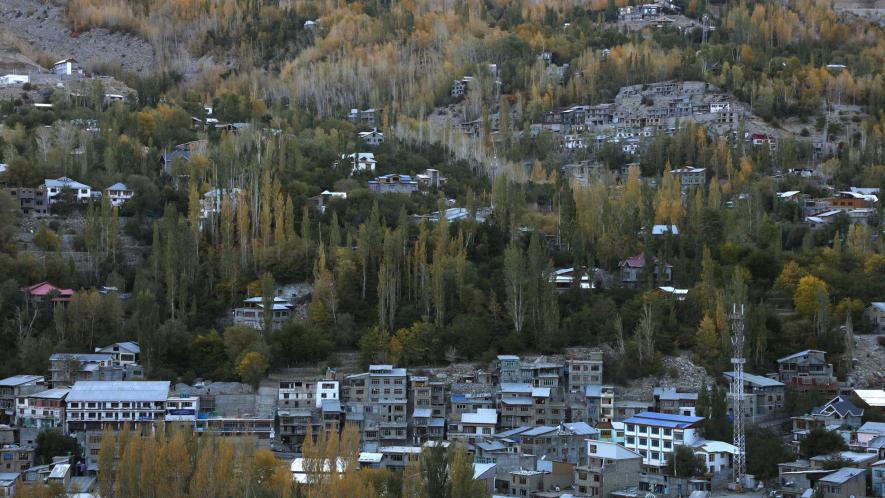
Leh-Ladakh city on afternoon light in fall.
The lush green landscapes of Kashmir give way to the brown landscapes of Ladakh, as the 420-km journey from Srinagar to Leh enters the high-altitude region.
Ladakh has two districts – Leh and Kargil. Most of Ladakh is at an altitude above 3,000 meters. Surrounded by the high Himalayan mountains, it falls in the rain shadow region, making it a high-altitude cold desert and one of the most remote and sparsely populated regions of India.
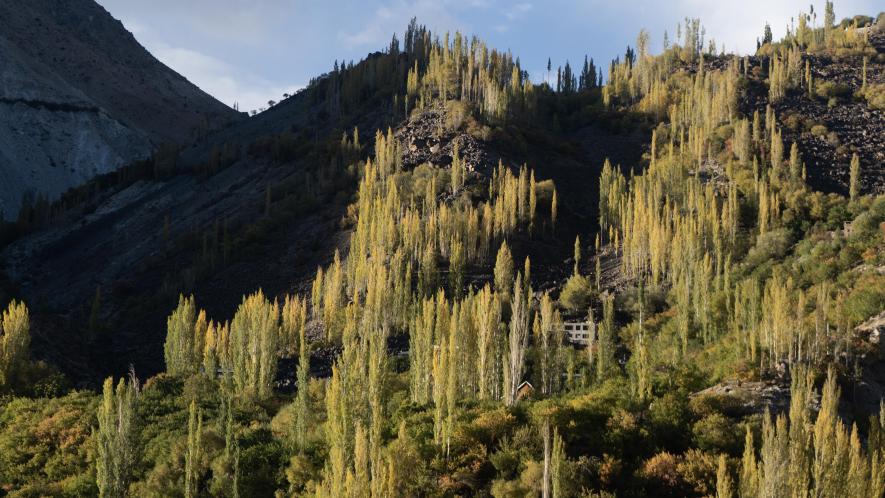
Taken on the way to Karg, Ladakh
For several months a year, Ladakh remains closed and cut off from the rest of the country due to extreme weather. Most of the tourism here happens between the months of June and September.
This writer visited Ladakh in October, when the picturesque landscape splashed with different colours. The roads are long and the fuel stations scarce.
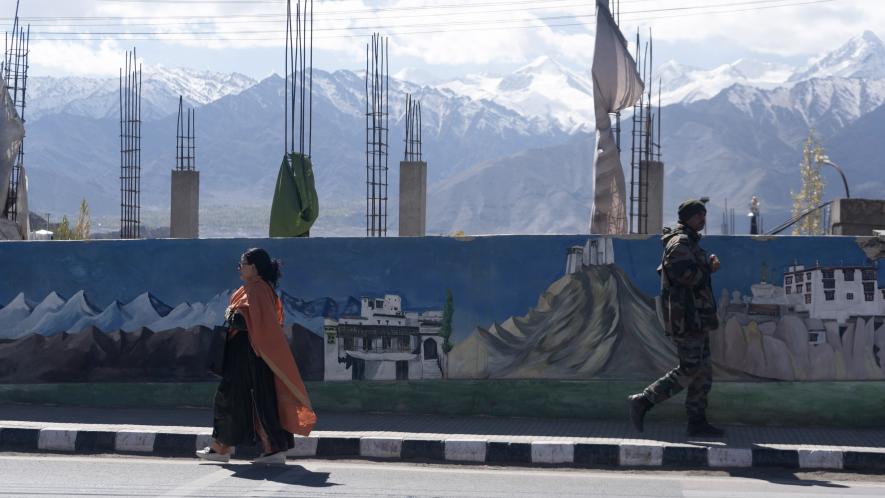
Somewhere in Leh.
The rough trails alongside magnificent landscapes, surrounded by small hills, make the view picturesque.
A halt at a small tea stall/grocery shop on the Leh-Srinagar Road, introduces us to Nawank. In his 50s, he says he has been working in the tea stall since he was a child, helping his father who used to take care of the shop. “We get the material for the shop from Leh, which is 160 km away from here, but as the season passes, very few people come to visit this region. The tourist flow is good between July to September,” he says.
The Leh Highway
From Sonmarg, a steady climb starts as one enters the first high-altitude mountain pass – Zoji La, a relatively smaller mountain pass, but a major point of transition.
The landscape changes dramatically as one gets to the other side of Zoji La. The green valleys are now replaced by imposing brown and barren mountains. Soon after Zoji La, lies Drass. Known as the second coldest inhabited place on the planet, Drass is a striking little town.
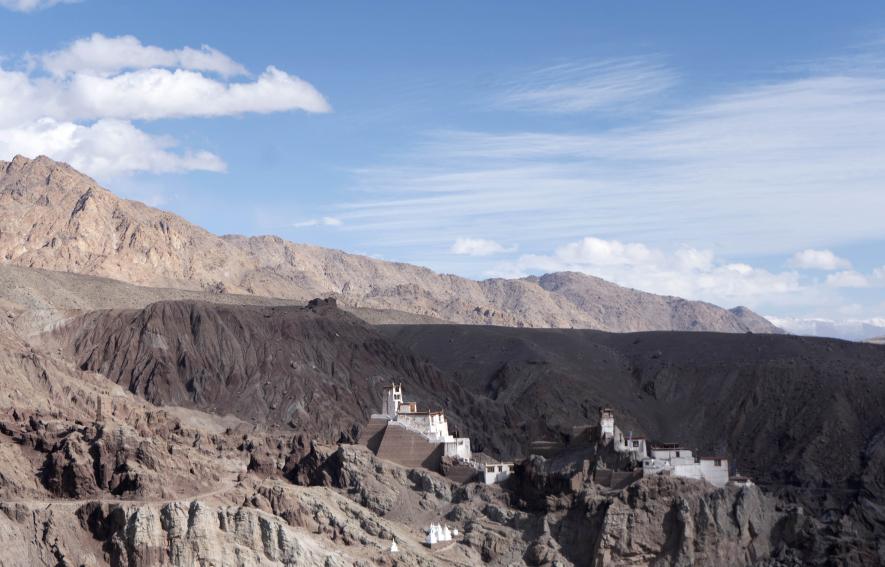
Glimpse of a monastery and a picturesque landscape.
After Drass is Kargil. The main street is just a busy market. But a little higher up is Goma Kargil. On the way is the famous Kargil Museum.
Then, we come to Fotu La that ends at Lamayuru, known as the Moonland of Ladakh.
Distant Moon, taken on the way back home.
Evenings are the best time to see the Moonland behind the meditation hill. On the other side of this Moonland, there are Buddhist stupas, shining in the golden glow of the setting sun.
One can describe Ladakh in so many ways because of its terrain and vivid mountains. The more one tries to discover Ladakh, the more it reveals.
Whilst the market space in Leh city is wide, allowing free flow of tourists, locals, stalls, and shops, it is the smaller lanes and by-lanes that give a real picture of traditional houses and how the people live. Made from mud and stones, these houses appear like blocks when seen from a distance, haphazardly arranged over a hilly landscape. The spaces between different homes are narrow strips, allowing people to peep into each other’s homes and communicate across balconies.
Children seen walking around the Leh Market, going towards their school early in the morning.
Most locals reside in Leh city for work during the tourist season or for government jobs, leaving their homes in villages near and far. Women from nearby villages travel daily to the Leh market, carrying fresh vegetables and produce to earn some money.
Woman from nearby villages travel daily to Leh city market to sell their vegetables and produce.
Serin T Dotkar, a 71-year-old woman, sells fruits and vegetables in a street stall in Leh's main market. "I now come to the market thrice a week, but in the summers, I used to come every day", she says, while arranging apricots and other items in her stall. She has been working here ever since she was a child. Serin says she leaves her home at 8 a.m to set up her stall in the Leh Market.
A building undergoing repairs inside the Leh Market.
Walking in the lanes, one sees people waiting for the milk truck. Mohsin, also known as MD Bhai, is a 36-year-old milkman in Leh. Every morning, he collects milk from the people in Sheeshot, a village on the outskirts of the city, and brings it to the Leh market. He has been doing this for the past two years. He sells a litre of organic milk for Rs 55.
Mohsin, 36-year-old milkman, collects milk from the people in Sheeshot, a village on the city's outskirts, and brings it to the Leh market.
Among those waiting for Mohsin’s mini truck, holding bottles and steel containers to buy milk, is a Kashmiri man, who resides in Leh with his family and runs a shop.
In a few parts of Ladakh, especially near the mountain regions, sheep rearing is an important livelihood.

Ladakh envelops a mystical “Moonland” of barren alpine desert, where Tibetan Buddhist monasteries stand snuggled among some of the world’s most impressive mountains.
Ladakh, a tourist haven, is considered quite a safe place for tourists, far away from the madding crowd in big cities. It is famous for Tibetan handicraft, prayer wheels, Buddhist masks, Thangka paintings, and silver jewellery.
Get the latest reports & analysis with people's perspective on Protests, movements & deep analytical videos, discussions of the current affairs in your Telegram app. Subscribe to NewsClick's Telegram channel & get Real-Time updates on stories, as they get published on our website.









